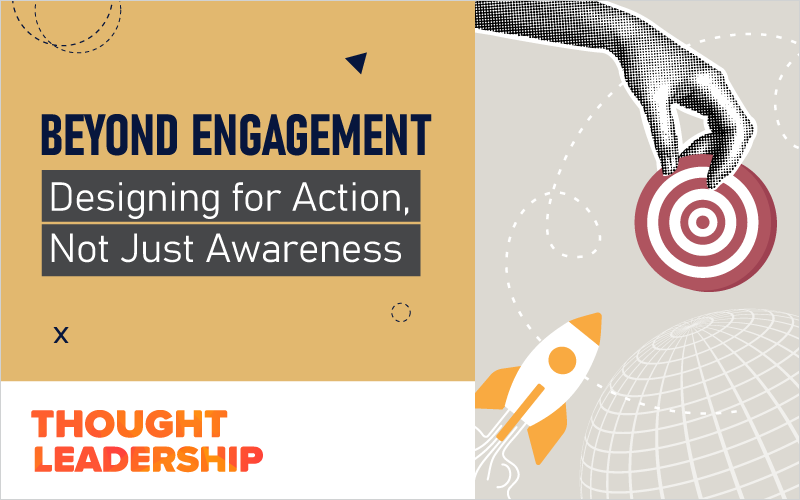How can learning professionals design training that does more than merely entertain? That’s a question as old as the L&D industry itself. Danielle Wallace, chief learning strategist at Beyond the Sky, tackled that question in a recent ELB Learning webinar. And trust me, she didn’t just pose the question—she also answered it.
Rethinking the Purpose of Training
For years, learner engagement has been the holy grail. Interactive modules, flashy design, and quizzes at the end of a course have become the norm. But in the modern workforce, engagement alone isn’t enough. If training doesn’t lead to changed behavior, it’s not good training.
Shifting the focus from knowledge to behavior is the key. It’s not just about what learners know but what they can do with what they know. The real measure of successful training is whether or not those newly learned skills can be acted out confidently.
Designing for Action, Not Just Awareness
Let’s compare two approaches to the same training goal: helping managers talk to their teams about mental health. In the first version, we’ll use traditional methods such as definitions, statistics, and a final quiz. In the second version, let’s throw learners into realistic, branching scenarios where they have to choose how to respond and see the outcomes of their decisions.
The result probably won’t surprise you. Learners in the second version felt significantly more prepared to have those meaningful conversations. This comparison highlights a crucial truth:
Learning by doing is more effective than passive consumption.
Learners build confidence through practice, not by memorizing terms. Application is better than instruction. Whether it’s choosing dialogue in a scenario, completing a task with a rubric, or practicing responses with an AI-powered coach, active participation leads to better retention and skill-building.
Instead of knowledge checks that test memory, design experiences where learners solve problems, make decisions, and get feedback. These moments of trial and error create the kind of friction that drives learning deeper.
Personalized Feedback at Scale
Feedback is critical to growth. But in large organizations, it's not always feasible for managers to coach every learner individually. That’s precisely why AI can be such a powerful addition to a learning environment. Through simple integrations, learners can get real-time feedback on their approach in simulated environments to help them practice tough conversations and refine their approach.
Whether feedback comes from a person or technology, what matters is that learners are not left wondering whether they’re on the right track.
Not every problem needs a course. Sometimes, a checklist, job aid, or quick reference guide is the more efficient and effective solution. These tools provide just-in-time support that mirrors real work environments, where no one remembers everything; they just know where to find the answer.
By considering performance support, L&D teams can reduce development time, free up budget, and still empower learners to do their jobs better.
The Power of Storytelling
Stories make learning relatable and sticky. Whether through video, podcast, comics, or avatar-driven dialogue, storytelling draws learners in, helps them see themselves in the content, and connects them emotionally with the material.
You don’t need a Hollywood budget to use this technique. A well-written scenario or learner-submitted success story can be just as powerful.
And don’t skip reflection. Reflection is often the first thing cut when timelines get tight, but it might be the most valuable piece. Giving learners space to pause and think about how they’ll apply what they’ve learned leads to better transfer on the job. It can be as simple as a final question in a module or an action plan learners download and refer to later; make sure you give your learners time to think about what they just learned.
Seven Ways to Drive Real Learning Outcomes
Start implementing these right away to develop experiences that drive real action:
- Design for performance, not just knowledge
- Encourage application instead of instruction
- Offer personalized feedback (even through AI)
- Use storytelling to drive relevance
- Replace or enhance training with performance support
- Build in opportunities for reflection
- Make engagement purposeful and accessible
These tips can stand alone or be layered into existing learning initiatives. You don’t need a complete overhaul to see real impact. Even small shifts like reframing a quiz question to be scenario-based can make a difference.
If you want to create meaningful change in a world where time is limited and outcomes matter more than ever, moving beyond engagement isn’t optional—it’s essential.
Watch the full webinar below to hear more details about how to transform your training into performance-driven learning.
Explore ELB Learning’s Authoring Tools
Ready to build training that goes beyond engagement? ELB Learning’s robust suite of authoring tools makes it easy to design, build, and deliver impactful learning experiences that drive action.
Disclaimer: The ideas, perspectives, and strategies shared in this article reflect the expertise of our featured speaker, Danielle Wallace. To explore more insights from her, be sure to follow her on LinkedIn.







